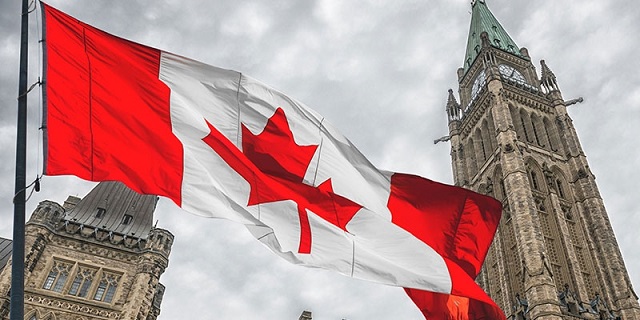Business
Global Affairs Canada Foreign Aid: An Update

Canadian Taxpayers are funding programs in foreign countries with little effect
Back in early November I reached out to Global Affairs Canada (GAC) for a response to questions I later posed in my What Happens When Ministries Go Rogue post. You might recall how GAC has contributed billions of dollars to the Global Fund to Fight AIDS, Tuberculosis and Malaria, only to badly miss their stated program objectives. Here, for the record, is my original email:
I’m doing research into GAC program spending and I’m having trouble tracking down information. For instance, your Project Browser tool tells me that, between 2008 and 2022, Canada committed $3.065 billion to the Global Fund to Fight AIDS, Tuberculosis and Malaria. The tool includes very specific outcomes (like a drop of at least 40 per cent in malaria mortality rates). Unfortunately, according to reliable public health data, none of the targets were even close to being achieved – especially in the years since 2015.
Similarly, Canada’s $125 million of funding to the World Food Programme between 2016 and 2021 to fight hunger in Africa roughly corresponded to a regional rise in malnutrition from 15 to 19.7 percent of the population since 2013.
I’ve been able to find no official documentation that GAC has ever conducted reviews of these programs (and others like it) or that you’ve reconsidered various funding choices in light of such failures. Is there data or information that I’m missing?
Just a few days ago, an official in the Business Intelligence Unit for Global Affairs Canada responded with a detailed email. He first directed me to some slightly dated but comprehensive assessments of the Global Fund, links to related audits and investigations, and a description of the program methodology.
The Audit is a reader-supported publication. To receive new posts and support my work, consider becoming a free or paid subscriber.
To their credit, the MOPAN 2022 Global Fund report identified five areas where important targets were missed, including the rollout of anti-corruption and fraud policies and building resilient and sustainable systems for health. That self-awareness inspires some confidence. And, in general, the assessments were comprehensive and serious.
What initially led me to suggest that GAC was running on autopilot and ignoring the real world impact of their spending was, in part, due to the minimalist structure of the GAC’s primary reporting system (their website). But it turns out that the one-dimensional objectives listed there did not fully reflect the actual program goals.
Nevertheless, none of the documents addressed my core questions:
- Why had the programs failed to meet at least some of their mortality targets?
- Why, after years of such shortfalls, did GAC continue to fully fund the programs?
The methodology document did focus a lot of attention on modelling counterfactuals. In other words, estimating how many people didn’t die due to their interventions. One issue with that is, by definition, counterfactuals are speculative. But the bigger problem is that, given at least some of the actual real-world results, they’re simply wrong.
As I originally wrote:
Our World in Data numbers give us a pretty good picture of how things played out in the real world. Tragically, Malaria killed 562,000 people in 2015 and 627,000 in 2020. That’s a jump of 11.6 percent as opposed to the 40 percent decline that was expected. According to the WHO, there were 1.6 million tuberculosis victims in 2015 against 1.2 million in 2023. That’s a 24.7 percent drop – impressive, but not quite the required 35 per cent.
I couldn’t quickly find the precise HIV data mentioned in the program expectations, but I did see that HIV deaths dropped by 26 percent between 2015 and 2021. So that’s a win.
I’m now inclined to acknowledge that the Global Fund is serious about regularly assessing their work. It wouldn’t be fair to characterize GAC operations as completely blind.
But at the same time, over the course of many years, the actual results haven’t come close to matching the programs objectives. Why has the federal government not shifted the significant funding involved to more effective operations?
The Audit is a reader-supported publication. To receive new posts and support my work, consider becoming a free or paid subscriber.
Business
Most Canadians say retaliatory tariffs on American goods contribute to raising the price of essential goods at home

- 77 per cent say Canada’s tariffs on U.S. products increase the price of consumer goods
- 72 per cent say that their current tax bill hurts their standard of living
A new MEI-Ipsos poll published this morning reveals a clear disconnect between Ottawa’s high-tax, high-spending approach and Canadians’ level of satisfaction.
“Canadians are not on board with Ottawa’s fiscal path,” says Samantha Dagres, communications manager at the MEI. “From housing to trade policy, Canadians feel they’re being squeezed by a government that is increasingly an impediment to their standard of living.”
More than half of Canadians (54 per cent) say Ottawa is spending too much, while only six per cent think it is spending too little.
A majority (54 per cent) also do not believe federal dollars are being effectively allocated to address Canada’s most important issues, and a similar proportion (55 per cent) are dissatisfied with the transparency and accountability in the government’s spending practices.
As for their own tax bills, Canadians are equally skeptical. Two-thirds (67 per cent) say they pay too much income tax, and about half say they do not receive good value in return.
Provincial governments fared even worse. A majority of Canadians say they receive poor value for the taxes they pay provincially. In Quebec, nearly two-thirds (64 per cent) of respondents say they are not getting their money’s worth from the provincial government.
Not coincidentally, Quebecers face the highest marginal tax rates in North America.
On the question of Canada’s response to the U.S. trade dispute, nearly eight in 10 Canadians (77 per cent) agree that Ottawa’s retaliatory tariffs on American products are driving up the cost of everyday goods.
“Canadians understand that tariffs are just another form of taxation, and that they are the ones footing the bill for any political posturing,” adds Ms. Dagres. “Ottawa should favour unilateral tariff reduction and increased trade with other nations, as opposed to retaliatory tariffs that heap more costs onto Canadian consumers and businesses.”
On the issue of housing, 74 per cent of respondents believe that taxes on new construction contribute directly to unaffordability.
All of this dissatisfaction culminates in 72 per cent of Canadians saying their overall tax burden is reducing their standard of living.
“Taxpayers are not just ATMs for government – and if they are going to pay such exorbitant taxes, you’d think the least they could expect is good service in return,” says Ms. Dagres. “Canadians are increasingly distrustful of a government that believes every problem can be solved with higher taxes.”
A sample of 1,020 Canadians 18 years of age and older was polled between June 17 and 23, 2025. The results are accurate to within ± 3.8 percentage points, 19 times out of 20.
The results of the MEI-Ipsos poll are available here.
* * *
The MEI is an independent public policy think tank with offices in Montreal, Ottawa, and Calgary. Through its publications, media appearances, and advisory services to policymakers, the MEI stimulates public policy debate and reforms based on sound economics and entrepreneurship.
Business
B.C. premier wants a private pipeline—here’s how you make that happen

From the Fraser Institute
By Julio Mejía and Elmira Aliakbari
At the federal level, the Carney government should scrap several Trudeau-era policies including Bill C-69 (which introduced vague criteria into energy project assessments including the effects on the “intersection of sex and gender with other identity factors”)
The Eby government has left the door (slightly) open to Alberta’s proposed pipeline to the British Columbia’s northern coast. Premier David Eby said he isn’t opposed to a new pipeline that would expand access to Asian markets—but he does not want government to pay for it. That’s a fair condition. But to attract private investment for pipelines and other projects, both the Eby government and the Carney government must reform the regulatory environment.
First, some background.
Trump’s tariffs against Canadian products underscore the risks of heavily relying on the United States as the primary destination for our oil and gas—Canada’s main exports. In 2024, nearly 96 per cent of oil exports and virtually all natural gas exports went to our southern neighbour. Clearly, Canada must diversify our energy export markets. Expanded pipelines to transport oil and gas, mostly produced in the Prairies, to coastal terminals would allow Canada’s energy sector to find new customers in Asia and Europe and become less reliant on the U.S. In fact, following the completion of the Trans Mountain Pipeline expansion between Alberta and B.C. in May 2024, exports to non-U.S. destinations increased by almost 60 per cent.
However, Canada’s uncompetitive regulatory environment continues to create uncertainty and deter investment in the energy sector. According to a 2023 survey of oil and gas investors, 68 per cent of respondents said uncertainty over environmental regulations deters investment in Canada compared to only 41 per cent of respondents for the U.S. And 59 per cent said the cost of regulatory compliance deters investment compared to 42 per cent in the U.S.
When looking at B.C. specifically, investor perceptions are even worse. Nearly 93 per cent of respondents for the province said uncertainty over environmental regulations deters investment while 92 per cent of respondents said uncertainty over protected lands deters investment. Among all Canadian jurisdictions included in the survey, investors said B.C. has the greatest barriers to investment.
How can policymakers help make B.C. more attractive to investment?
At the federal level, the Carney government should scrap several Trudeau-era policies including Bill C-69 (which introduced vague criteria into energy project assessments including the effects on the “intersection of sex and gender with other identity factors”), Bill C-48 (which effectively banned large oil tankers off B.C.’s northern coast, limiting access to Asian markets), and the proposed cap on greenhouse gas (GHG) emissions in the oil and gas sector (which will likely lead to a reduction in oil and gas production, decreasing the need for new infrastructure and, in turn, deterring investment in the energy sector).
At the provincial level, the Eby government should abandon its latest GHG reduction targets, which discourage investment in the energy sector. Indeed, in 2023 provincial regulators rejected a proposal from FortisBC, the province’s main natural gas provider, because it did not align with the Eby government’s emission-reduction targets.
Premier Eby is right—private investment should develop energy infrastructure. But to attract that investment, the province must have clear, predictable and competitive regulations, which balance environmental protection with the need for investment, jobs and widespread prosperity. To make B.C. and Canada a more appealing destination for investment, both federal and provincial governments must remove the regulatory barriers that keep capital away.
-

 COVID-195 hours ago
COVID-195 hours agoFDA requires new warning on mRNA COVID shots due to heart damage in young men
-

 Business3 hours ago
Business3 hours agoCarney’s new agenda faces old Canadian problems
-

 Indigenous4 hours ago
Indigenous4 hours agoInternal emails show Canadian gov’t doubted ‘mass graves’ narrative but went along with it
-

 Bruce Dowbiggin6 hours ago
Bruce Dowbiggin6 hours agoEau Canada! Join Us In An Inclusive New National Anthem
-

 Bruce Dowbiggin2 days ago
Bruce Dowbiggin2 days agoThe Covid 19 Disaster: When Do We Get The Apologies?
-

 Media2 days ago
Media2 days agoCBC journalist quits, accuses outlet of anti-Conservative bias and censorship
-

 Business2 days ago
Business2 days agoCarney government should recognize that private sector drives Canada’s economy
-

 Alberta2 days ago
Alberta2 days agoFourteen regional advisory councils will shape health care planning and delivery in Alberta








